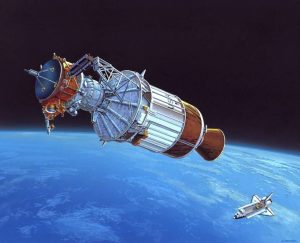- This topic is empty.
-
AuthorPosts
-
08/11/2024 at 11:56 #3487
In the realm of automotive engineering, the mechanical fuel pump plays a crucial role in delivering the lifeblood of an internal combustion engine – fuel. Understanding how a mechanical fuel pump operates is essential for both automotive enthusiasts and professionals alike. In this comprehensive forum post, we will delve into the intricate mechanisms and functions of a mechanical fuel pump, shedding light on its significance and operation.
1. The Basics of a Mechanical Fuel Pump:
A mechanical fuel pump is a device responsible for supplying fuel from the gas tank to the engine. Unlike its electronic counterparts, it operates using mechanical principles, utilizing a camshaft-driven lever system. This design ensures a constant and reliable flow of fuel to meet the engine’s demands.2. Components and their Functions:
2.1 Diaphragm: At the heart of a mechanical fuel pump lies a flexible diaphragm, typically made of rubber or synthetic material. This diaphragm acts as a barrier between the fuel and the pump’s internal components, preventing any leakage.2.2 Inlet and Outlet Valves: The mechanical fuel pump incorporates two valves – an inlet valve and an outlet valve. The inlet valve allows fuel to enter the pump from the gas tank, while the outlet valve controls the flow of fuel towards the engine.
2.3 Lever System: Connected to the engine’s camshaft, a lever system converts the rotational motion of the camshaft into vertical motion. This motion drives the diaphragm, creating the necessary pressure to move fuel through the pump.
3. Fuel Pump Operation:
3.1 Fuel Intake: As the engine’s camshaft rotates, it pushes the lever system, causing the diaphragm to move downward. This action creates a vacuum within the pump, allowing the inlet valve to open and draw fuel from the gas tank.3.2 Fuel Compression: As the diaphragm moves upward, it compresses the fuel within the pump. This compression increases the pressure, forcing the outlet valve to open and allowing fuel to flow towards the engine.
3.3 Fuel Delivery: The pressurized fuel is then delivered to the engine’s carburetor or fuel injectors, where it mixes with air and ignites to power the combustion process.
4. Advantages and Limitations:
4.1 Advantages: Mechanical fuel pumps offer several advantages, including simplicity, reliability, and compatibility with a wide range of engines. They are less prone to electronic malfunctions and can operate effectively even in harsh conditions.4.2 Limitations: However, mechanical fuel pumps have certain limitations. They may not provide consistent fuel pressure at high engine speeds, leading to potential performance issues. Additionally, their mechanical nature requires periodic maintenance and adjustment to ensure optimal operation.
Conclusion:
Understanding the inner workings of a mechanical fuel pump is crucial for anyone involved in the automotive industry. From its basic components to the intricacies of its operation, this forum post has provided a comprehensive overview of how a mechanical fuel pump operates. By grasping this knowledge, enthusiasts and professionals alike can better appreciate the significance of this vital component in the functioning of an internal combustion engine. -
AuthorPosts
- You must be logged in to reply to this topic.


